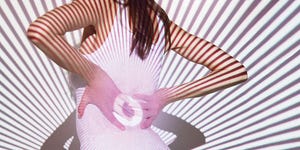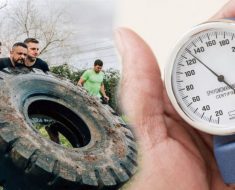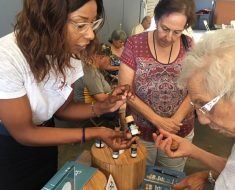
Cupping is the wellness trend that just refuses to die.
Seriously—raise your hand if you thought cupping therapy would die down back in 2016 after Michael Phelps permanently exited the pool (it me).
No such luck: Two years later and celebs are still participating in the cupping trend (I see you, Kaley Cuoco and Busy Phillips).
But uh, what exactly is cupping—and what is it used for?
Alright, WTF is cupping?
Cupping is an ancient Chinese therapy that’s based on the belief that certain health problems can be caused by stagnant blood and a poor energy flow through your body.
To fix or prevent those health issues, cupping practitioners apply cups—typically glass or silicone—to your skin to create a pressure that sucks your skin inward, according to the National Center for Complementary and Integrative Medicine.
My bra straps match my cupping marks! Birdie asked me tonight if this is what Michael Phelps did in the Olympics and I was weirdly proud of her for remembering that. (If you watch my instastories, this is not the scandalous pic, obvi)
A post shared by Busy Philipps (@busyphilipps) on
Cupping practitioners usually place cups on a person’s back—though face cupping is becoming *a thing* now too—where they’ll either leave the cups in place, or slide them around using lotion or oil, per the NCCIM.
Either way, the pressure that the cups create draws blood to the affected area, increasing your blood flow overall, says Chiti Parikh, M.D., integrative medicine practitioner at the Weill Cornell Medicine Integrative Health and Wellbeing Center in New York City.
“That increased blood flow can relieve muscle tension, improve circulation, and reduce inflammation,” says Parikh.
What’s cupping even used for?
Generally, cupping is used to treat chronic pain—back pain and headaches, in particular, says Parikh. “It’s all about getting rid of musculoskeletal pain, which is often a physical manifestation of chronic stress,” he adds.
More often than not, that chronic stress manifests in how you carry yourself. “We’re often tensing our muscles when we’re stressed—especially when we’re hunched over our computers and our phones—and that muscle tension can result in physical pain, which is what cupping helps reduce,” says Parikh.

Many people also claim that cupping can help with detoxification, but because “detoxing” really isn’t a thing, what they mean is that they are relieving inflammation in the area, Parikh clarifies.
“When people are suffering from physical pain, that means that inflammation has increased locally in that area. Cupping, then, improves blood circulation in that area by attracting immune cells to that location to increase the repair and recovery process, so that the swelling can go down,” explains Parikh.
While there are studies that claim cupping therapy can help reduce chronic pain, like a 2016 study published in the journal Evidence Based Complementary Alternative Medicine, the research is still inconclusive.
That results of that study in particular, as well as many other studies regarding cupping, may also be due to the placebo effect (i.e., simply believing something is working).
So, can cupping reduce my stress?
Cupping may be helpful in treating the more physical manifestations of stress. But, as we all know, physical symptoms are only part of the full story.
That’s why cupping works best when paired with acupuncture to help the mental side of stress, says Parikh. “Acupuncture releases endorphins, and may be better able to help manage the root cause of your mental stress and anxiety in a more holistic way,” she explains. “That’s why the combo of cupping and acupuncture works really synergistically to manage your stress from all areas.”

Plus, while trying cupping on its own may help treat physical pain in more acute conditions, the best and most long-lasting relief comes when you go for the combo. “The effect is simply more sustainable that way,” she concludes. “Cupping is hardly ever recommended on its own.”
Should I try cupping or nah?
In short: It’s probably not going to do any damage—and hey, it might even help that back pain that’s been bugging you for weeks, so go ahead and give it a try.
Something to keep in mind: Those cups are definitely going to leave big, hickey-like bruises on your skin that can last anywhere from a few days to two weeks—so if that’s not something you’re interested in, maybe steer clear.
(It should be noted, however, that the color of the mark varies from person to person and doesn’t signify how well the cupping worked.)
Hurts so good #nofilter #cupping ? #horsegirltanlines
A post shared by @ normancook on
You’ll also want to steer clear of cupping if you’re on blood thinners, have trouble with bleeding or clotting, or you have an open wound, cautions Parikh. The same goes for those with very sensitive or thin skin, she adds. “You should also avoid cupping on any areas where you have delicate skin, because it can cause tearing.”
If these restrictions do not apply to you and you want to give cupping a whirl, it’s important to find a good practitioner. Parikh says the best cupping practitioners are actually—you guessed it—acupuncturists.
“To find a good one in your area, I would recommend asking an integrative medicine doctor for a recommendation,” says Parikh. “If you don’t know one, your regular doctor will usually be able to refer you to a good one.”
Now, go forth and let the cupping begin
Source: Read Full Article





